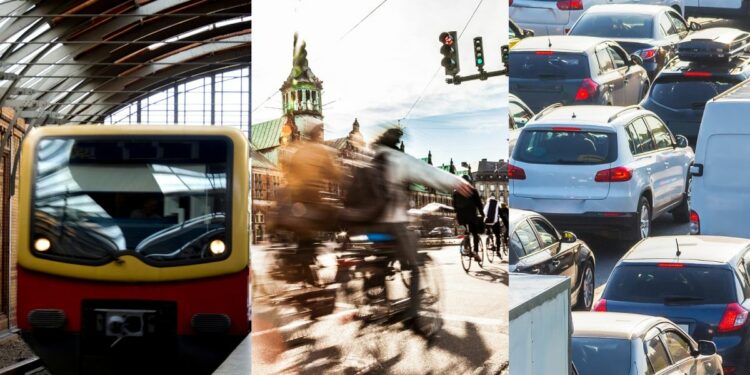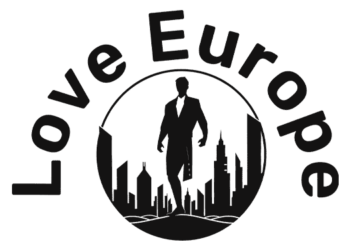Walking is also more popular than cycling in almost all cities, according to the European Commission’s 2023 report on the quality of life in European cities.
Survey participants were asked, “On a typical day, which mode(s) of transport do you use most often?” They could select up to two options. Therefore, the results do not show a single “main” mode of transport, but rather reflect the one or two most popular preferences among residents.
In 2023, on average, 48 per cent of residents in 83 European cities used cars as a mode of transportation on a typical day.
Among the capitals, including those in EU member states, EU candidate countries, EFTA countries, and the UK, car usage ranged from 28 per cent in Stockholm to 68 per cent in Reykjavik.
When all cities are considered, this figure reaches 70 per cent in Braga.
Car usage decreases in larger cities
In cities with populations under 250,000, 52 per cent of residents report using a car on a typical day, but this figure drops to 44 per cent in cities with populations between 1 and 5 million according to the ‘Report on the quality of life in European cities, 2023’.
Car usage also varies significantly between cities within the same country, with differences of 19 percentage points in France and the UK.
For example, 31 per cent of Paris residents reported using a car for transportation, compared to 50 per cent in Lille.
In the UK, London had the lowest car usage at 41 per cent while in the Tyneside conurbation, it was 60 per cent.
“Capital cities usually being the largest city in the country, they tend to have good public transport services; also, using a car may be less attractive due to congestion and higher parking costs,” the report noted.
Larger cities have more public transport users
On average, 40 per cent of European residents reported using urban public transport (bus, tram, or metro) on a typical day, and 4 per cent said they used trains. However, the total is not necessarily 44 per cent, as some respondents may use both modes of transport (in fact, the report revealed the combined total was 43 per cent).
Unlike car usage, cities with larger populations have more public transport users. While around 35 per cent of residents declared using public transport on a typical day in cities with fewer than 250,000 inhabitants, this percentage rises to 47 per cent in cities with populations between 1 and 5 million.
Urban public transport usage varied significantly among the surveyed cities, ranging from 15 per cent in Nicosia to 69 per cent in Prague.
ADVERTISEMENT
Eastern and Northern European cities generally show higher rates of public transport usage.
Significant gaps exist between cities within the same country when it comes to public transport usage. In most countries, the highest share of public transport use is found in capital cities. The report noted that this is partly “because these cities tend to have an extensive public transport network with frequent services”.
Walking is the third most popular mode with Paris leading the way
Following cars and urban public transport, “on foot” is the third most popular mode of transportation in 83 European cities on average.
In fact, 27 per cent of residents reported using walking as their mode of transport on a typical day, varying from 16 per cent in Ankara to 41 per cent in Paris. In Berlin and Rome, this figure is almost half that of Paris, with just 21 per cent of residents walking.
ADVERTISEMENT
Turkish cities dominate the bottom ranks of the walking list. Istanbul, Ankara (both at 16 per cent), and Antalya (18 per cent) reported the lowest percentages of walking among all 83 cities. Diyarbakir also ranked sixth from the bottom with 19 per cent.
The report found that walking shows less divergence between top and bottom-ranked cities than any other mobility mode.
Which factors are linked to walking rates?
Several factors may influence walking rates, including improved pedestrian infrastructure and urban planning. A recent study published in the Journal of Transport Geography, which analysed 59 city centres across 26 European countries, found:
Streetscapes of Southern and Eastern European cities are less well-developedWealthier cities with higher levels of subjective well-being are more walkable
ADVERTISEMENT
“More pedestrian-friendly centres across Europe can influence sustainable travel habits within the city by reinforcing the importance of public space quality and pedestrian facilities to local populations,” Alexandros Bartzokas-Tsiompras, a researcher in urban and transport planning at the National Technical University of Athens, suggested.
Which cities have the highest rate of cyclists?
Of those surveyed, 14 per cent of European residents use bicycles as a mode of transport. The Netherlands and Denmark stand out as outliers in terms of cycling rates.
Among the 83 cities, only three have a very high proportion of daily cyclists—over one-third of the population. These cities are Groningen (46 per cent) and Amsterdam (39 per cent) in the Netherlands, and Copenhagen (35 per cent) in Denmark.
Rome, Belgrade, and Vilnius have the lowest rates of bicycle usage, with 6 per cent or less of the residents using bikes on a typical day.
ADVERTISEMENTMotorcycles are popular in Southern Europe and Mediterranean cities
Cities in Southern Europe, such as Naples and Malaga (both at 13 per cent), and Rome (12 per cent), have the highest rates of motorcycle usage.
Similarly, cities around the Mediterranean, including Athens and Marseille (11 per cent), as well as Antalya and Nicosia (10 per cent), also show relatively high usage.
The region’s climate likely plays a significant role in these figures. Geneva stands out as an exception with 12 per cent motorcycle usage. The average motorcycle usage across the 83 cities is 7 per cent.
The European Commission advocates for cleaner, greener, and more sustainable urban mobility. Public transport, walking, and cycling play a central role in achieving this vision.
ADVERTISEMENT
The ‘Survey on the Quality of Life in European Cities’ collected responses from over 71,000 people across 83 cities in Europe. At least 839 residents in each city participated in the survey.
Source link : http://www.bing.com/news/apiclick.aspx?ref=FexRss&aid=&tid=66f7e7536bae4afb90b81f5e9a308ae2&url=https%3A%2F%2Fwww.euronews.com%2Fnext%2F2024%2F09%2F28%2Fcars-public-transport-cycling-this-is-how-people-in-europe-prefer-getting-around-city-by-c&c=14646898333106628359&mkt=de-de
Author :
Publish date : 2024-09-28 03:17:00
Copyright for syndicated content belongs to the linked Source.


